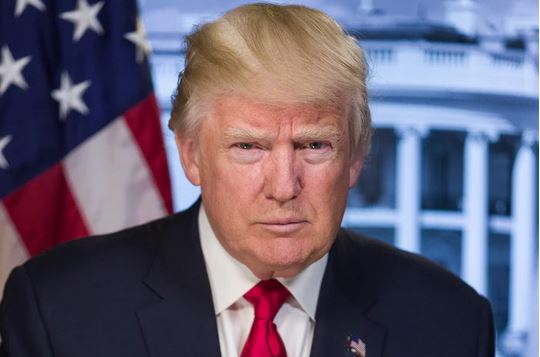Why Trump’s Policies Are Forcing Countries To Distrust The U.S. And The Dollar

Image Source: Unsplash
President Donald Trump is slated to launch a major assault in his trade war on April 2nd, when the Trump administration says it will levy reciprocal tariffs on other countries, possibly worldwide. In January, Trump threatened a 100% tariff on BRICS nations for exploring an alternative to the U.S. dollar in international payments.
Can anyone blame the BRICS for considering this? Since World War II, U.S. Treasury bonds have provided foreign central banks, businesses and investors with a secure store of value. This stability has allowed the U.S. dollar to be the primary currency for international commerce.
Here’s an example: A Chilean firm importing clothing from Vietnam could convert Chilean pesos to Vietnamese dong, but the market between those currencies is thin. Instead, the Chilean importer’s bank likely uses the global SWIFT messaging system in Brussels to purchase U.S. dollars through a U.S. bank, and then similarly purchases dong with those dollars to complete the payment.
U.S. dollars constitute 58% of the foreign currency reserves of the world’s central banks, and are on at least one side of almost 90% of foreign exchange transactions. International access to SWIFT, which the United States can influence, and the U.S. banking system, which the U.S. Treasury controls, are both essential.
Other nations and their investors were happy with this arrangement as long as they could be confident that the United States would exercise its power responsibly and offer a legal system to protect against the arbitrary confiscation of assets. Investors in other countries also want to be confident that the United States pursues macroeconomic policies that protect the value of their dollar-based holdings.
Enter Washington’s increasing reliance on economic sanctions to accomplish its foreign policy objectives. For example, in 2018, Trump withdrew the United States from an agreement with Iran to curb the development of nuclear weapons and cut off Iran’s access to dollar payments for its oil. The Europeans, who strongly supported the U.S.-Iran pact, established INTEX as an alternative platform. Ultimately, this effort failed, owing to the necessity of finding pairs of customers in Europe and Iran seeking currency exchanges in similar amounts.
Meanwhile, Russia, China, the U.A.E. and several other nations have explored an alternative, called mBridge, for bilateral currency transactions. But duplicating the complex SWIFT system and lacking a store of value analog to U.S. Treasurys pose considerable challenges.
Trump’s trade war violates America’s international obligations. Trump also has plans to deport 13 million noncitizens that his predecessor effectively welcomed. He attacks an independent U.S. judiciary, threatens to send the U.S. military to Mexico to combat drug cartels and promises to seize both Greenland and the Panama Canal.
These decisions and policies force businesses in other countries to question the prudence of relying on the United States to be the custodian of the payments system — the main artery of international commerce.
Moreover, the United States may find that the world’s appetite for its debt has limits. Here’s why that would put the Trump administration in a tight spot.
Trump’s 2017 Tax Cuts and Jobs Act (TCJA), along with former President Joe Biden’s expansion of Obamacare subsidies, social programs and student loan forgiveness — plus industrial policies for semiconductors, green power and electric vehicles — helped push the federal deficit to 6.4% of GDP in 2024 from 3.2% in 2016.
The tax-cut provisions of the TCJA expire soon. Extending the TCJA, plus other enhancements Trump has promised, could hike the federal deficit well above 7%.
Already, there have been warnings. In July 2023, the Treasury announced a temporary surge in borrowing requirements to rebuild cash balances after a debt ceiling standoff in Congress was resolved. That instigated a full percentage-point jump in the 10-year Treasury rate by late October 2023, even as the U.S. Federal Reserve was holding its benchmark rate steady. Since September 2024, the Fed has lowered the federal-funds rate by 1 percentage point, while the market rate for 10-year Treasurys has risen substantially.
Another jump in the budget deficit and Treasury borrowing requirements could drive fears that the Fed would have to deter rising interest rates by printing money to buy longer-term Treasurys.
In that scenario, Washington wouldn’t formally default, but printing money to enable ballooning federal deficits would accelerate inflation, erode the real value of foreign holdings of Treasurys and compromise the dollar as a reliable store of value.
In that scenario, the search for alternatives to the dollar as an anchor for global commerce could get more serious. One idea gaining traction is a digital currency, backed by a basket of the world’s leading currencies.
in 2021, would have been such a digital currency. An analog could be created by major nations at the central bank of a neutral nation with a reliable legal system, such as Switzerland. Large commercial banks’ accounts would have been denominated in libra and a market for foreign governments and businesses to issue bonds and obtain loans denominated in libra would have developed.
But while libra failed, the idea has stuck. A reserve currency convertible to a basket of major currencies would only be subject to the average pace of inflation of those currencies’ issuing nations. Bonds denominated in that asset would entail less risk to the profligate behavior of any one government. This would create a store of value, independent of the U.S. dollar, reasonably able to avoid the risks from both America’s fiscal profligacy and the whims of its national political leaders.
More By This Author:
Economic Data Forecasts For The Weeks Of March 31 And April 7Economic Data Forecasts For The Weeks Of March 17 And 24
Economic Data Forecasts For The Weeks Of March 3 And 10
Peter Morici is an economist and professor at the Smith School of Business, University of Maryland, and widely published columnist. He is the five time winner of the MarketWatch best forecaster ...
more


